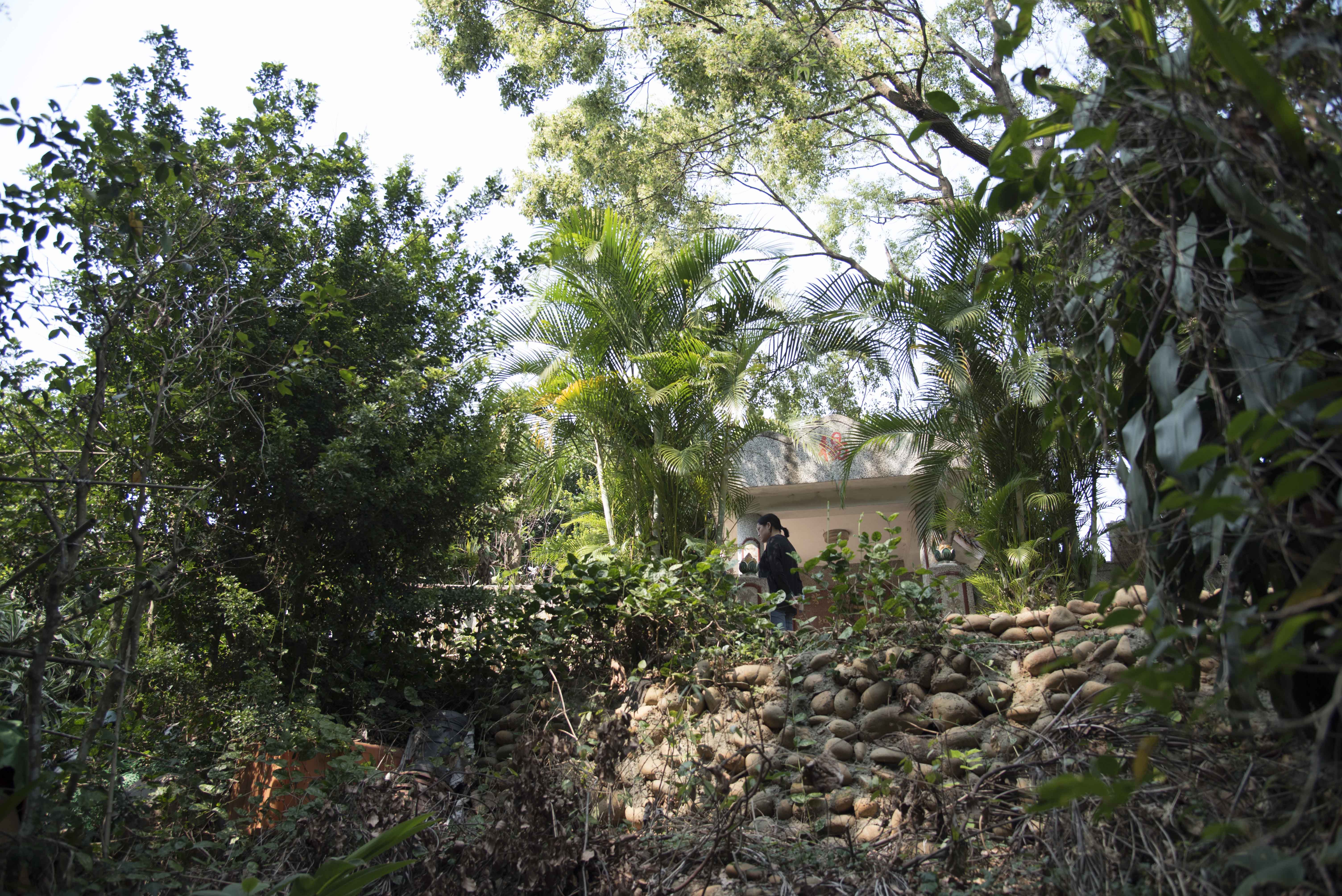《最低的地方》(Home, Sweet Home)創作論述
一百年來,鱸鰻溝的兩岸,從日本殖民時期的火燒島浮浪者收容所、新生訓導處、綠島指揮部、綠洲山莊、綠島監獄、自強山莊、勵德班、綠島技能訓練所,各種監獄不斷疊加在此。如今,除了現場留下的可見監獄殘跡,還有什麼迴盪?
我將眼光置於1950–1970年代之間交會的一段關係,因白色恐怖來到新生訓導處的政治受難者,與在地人之間的日常生活。交會之時,一同在這塊土地上自給自足的人們,沿著鱸鰻溝上山下海,河谷作為地理空間上最低的地方,曾是彼此之間鄰居般共生共存之處。在新生刑期屆滿之後,離去的新生、續存的綠島人,他們繼續活著,而生活走向什麼方向、各自的家園該怎麼重組?
這次參與的駐村計畫於五月開始進行,在駐村之前,我在本島先行拜訪了幾位政治受難者與後代家屬。其中拜訪了文學家楊逵的家屬、走進楊逵於1961年出獄後開墾的東海花園,見到他生前種下的植物、以及後代持續在花園裡的勞動,逐創作了作品《園丁日記》(位於照相部遺址)與《拜訪老園丁》工作坊。
登島駐村之後,逐與蔡居福阿公、田春玉阿嬤熟識,感受到新生的來到、離去、以及多次不同類型監獄的進入、白色恐怖再以人權博物館回到綠島的過程,他們的生命不斷被影響,包含土地徵收、生態改變、產業轉型等。以書寫作為在綠島駐村創作的方法,創作了三篇故事:《扛家》、《度假的幻覺》、《猶未炸石頭的時陣》,從訪談和書籍資料、楊逵的文學作品與家書、綠島在地人的生活,以及自身駐村感受進行書寫。
特別感謝:田春玉、董芳蘭、陳柏鈞、陳顯宗、楊田郎、楊國宇、楊翠、楊曜聰、蔡居福、鍾逸人
Over the past century, various penitentiary facilities were built on both sides of Liumagou, including the Fire Island Vagrant Shelter in the period of Japanese rule, New Life Correction Center, Taiwan Provincial Security Command on Green Island, Oasis Villa, Lyudao Prison,Tzu Chiang Villa, Lideban Prison and Lyudao Skill Training Institute. Today, apart from visible ruins of these prisons, what is left at these sites?
I have focused on a certain relationship stemming from the encounters between the political victims who came to New Life Correction Center due to the White Terror and the everyday life of the locals between the 1950s and the 1970s. During these encounters, people who had tried to sustain themselves on the island moved along Liumagou, going up the mountains and going to the seaside. The lowest point of the geographical space of the river valley used to be where the two groups of people cohabited like neighbors. After their sentences were finished, the prisoners that left and the locals that stayed on the island got on with their lives. However, what had their lives become? How did they rebuild their homes?
My residency program started in May. Before the program officially started, I visited several political victims and descendants of political victims in Taiwan, among whom were the family members of the writer, Yang Kui. Visiting Yang’s Tunghai Garden, which he built after being released in 1961, I saw the plants he grew when he was alive as well as the manual tasks his descendants have continued performing in the garden. The experience has inspired me to create the work, A Gardener’s Diary (installed in the old photo studio), and the workshop, “A Visit to the Senior Gardener.”
After I began the residency, I got to know two elders, Tsai Chu-Fu and Tien Chun-Yu, and had a chance to perceive how their lives have been influenced in relation to land expropriation, the changing ecology and the transformation of industries, which have happened throughout the continuous flow of arriving and departing political prisoners, the process of how various forms of prisons were established on the island, and the return of the White Terror in the form of the National Human Rights Museum. Therefore, I used writing as my creative method for this residency on Green Island and wrote three stories, respectively titled “Shouldering the Family,” “Vacation Fantasy” and “Before Exploding the Rocks,” which were based on interviews, publications, Yang Kui’s literary works and family letters, the locals’ life and how I felt during the residency.
Special thanks: TIEN Chun-Yu, DONG Fang-Lan, CHEN Po-Chun, CHEN Hsien-Tsung,
YANG Tien-Lang, YANG Kuo-Yu, YANG Tsui, YANG Yao-Tsung, TSAI Chu-Fu, CHUNG Yi-Jen




